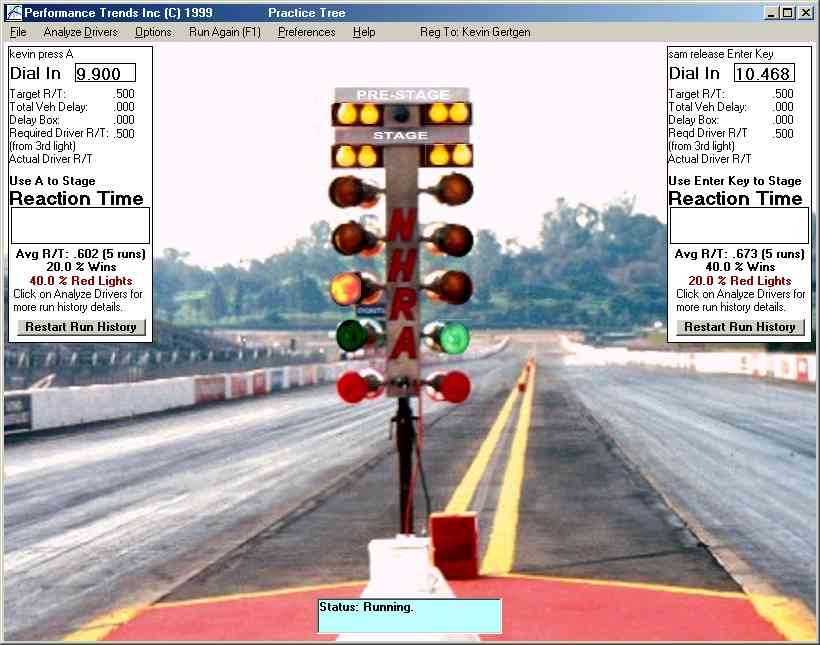As most Drag Racers know, “cutting a good light” can be the difference between winning and loosing.
The racer with the best reaction time has a huge advantage. That is why many Drag Racers spend so much time working and practicing on their starts. Some of the top Drag Racers go to special facilities where they work on eye – hand coordination to get an advantage over their competition.
But there is more to getting your drag car off the line quicker and more consistently than your opponent than just eye-hand coordination. You have to also take in account all the details which make up the Total Reaction Time.
First, here’s a little background: The typical Drag Racing starting line “Christmas tree” consists of staging lights (which let you, the driver, know your car is at the starting line), 3 yellow lights and the 1 green “Go” light. The lights count down yellow, yellow, yellow, then green with 0.5 seconds between them, 2 seconds total. Because a typical Total Reaction Time is about 0.5 seconds, most Drag Racers use the last yellow light as their signal to go (release the clutch or trans brake switch). Then by the time the car actually gets going, the green light is On. If you wait to see the green light, you’re actually 0.5 seconds late. However, if YOUR actual Total Reaction Time is 0.499 seconds instead of the 0.5 seconds between the last yellow and green, your leave too soon by .001 seconds, “Red Light” and loose.

A CRITICAL aspect of any Practice Tree is understanding all the “delay times” which make up the Total Reaction Time. Total Reaction Time is the time from the light(s) turning On on the Tree and the car uncovering the Staging Beam, starting the ET timer. Total Reaction Time is made up of: Your human body’s reaction time to the lights, your Vehicle’s Response Time, the RollOut time, and any electronic delay box delay time. Your vehicle’s Response time from you giving it a signal (ex.releasing the transbrake button) and the vehicle actually starting to move. This can be made up of tire sidewall, suspension and driveline “wrap up”, fluid delays in the transmission or linkage motion in a clutch car. The “RollOut time” which is the time required to roll out from the staging position to uncovering the light which starts the ET timer. If you uncover this light before the green light, you “red light” and lose.
Given all of the variables and delays that go into Drag Racing reaction time it is not enough to practice “just” your human reaction time. You must understand the effect of all the other reaction times and how they effect Total Reaction Time. For example, if your human reaction time is too slow, perhaps you can stage deeper or change your car’s front tire diameter to reduce the RollOut time to compensate.
There are many online Practice Trees out there but they have very limited options. There are also some actual miniature Practice Trees with lights and buttons, and even full size trees, but most of these are rather expensive. Plus if you would like to keep track of your progress you have even fewer options.
That is why many people prefer computer programs that have many options to give you a more “flexible” Practice Tree. Many Practice Tree programs have options for Vehicle Delay and RollOut Time. Some, like the Performance Trends Practice Tree, even let you go into details like changing staging depth, front tire stagger and diameter to see the effect on RollOut time. Plus since it is on a computer you can hook up hand switches or foot pedals for a more realistic feel. And computers are good at recording data so you can keep track of your progress for future analysis.